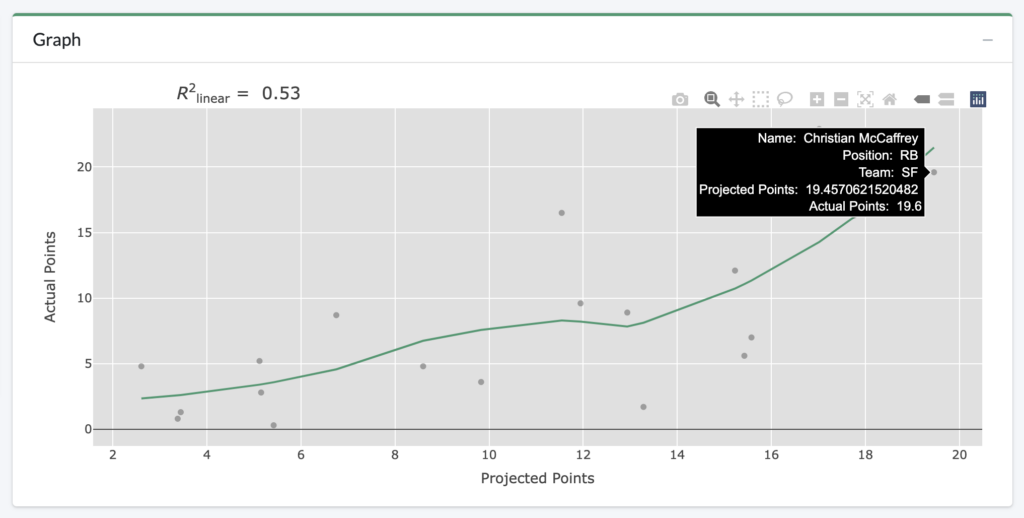Have you ever wanted to know the accuracy of various projection sources to hold the projection makers accountable? In the past, we have published articles on the accuracy of projection sources. However, we wanted to give users a way to examine the accuracy of projections themselves.
This offseason, the Fantasy Football Analytics team has been working to update our webapp to allow users to examine the accuracy of historical fantasy football projections. For the first time in fantasy football history, there is now a tool to examine the accuracy of projections. We are the first and only website to provide users the ability to examine the accuracy of projections (and not just rankings)! The app allows you to examine the accuracy of historical projections using various settings, including different aggregation methods and to specify different weights to give each projection source. That way, you can use the settings that will be the most accurate for your upcoming season to help you win your league. In order to examine the accuracy of historical projections, you’ll need an FFA Insider subscription.
The tab is available to subscribers in our app here: https://apps.fantasyfootballanalytics.net
In general settings, you can update the analysts, positions, seasons, league scoring settings, types of averaging (e.g., mean, weighted average, robust average), and weights for each projection source. You can also update the specific week to see the actual performance of different projections week to week for each week and season since 2018. We are also working on making data available for seasons prior to 2018, and we hope to release that in the future.
The app includes an interactive scatterplot where you can see the actual vs. projected points of each player in a given week or season (preview below):
A list of available metrics and a quick definition is below.
R2: Coefficient of Determination. Larger values are better.
RMSE: Root Mean Squared Error. Smaller values are better.
MASE: Mean Absolute Scaled Error. Smaller values are better.
ME: Mean Error. Values closer to zero are better.
MAE: Mean Absolute Error. Smaller values are better.
MSE: Mean Squared Error. Smaller values are better.
MPE: Mean Percentage Error. Values closer to zero are better.
MAPE: Mean Absolute Percentage Error. Values closer to zero are better.
sMAPE: Symmetric Mean Absolute Percentage Error. Values closer to zero are better.
RMSLE: Root Mean Squared Log Error. Smaller values are better.
Predictive R2: Larger values are better.
We hope you enjoy digging into the historic accuracy data!
The post 2023 Accuracy Tab Update appeared first on Fantasy Football Analytics.
